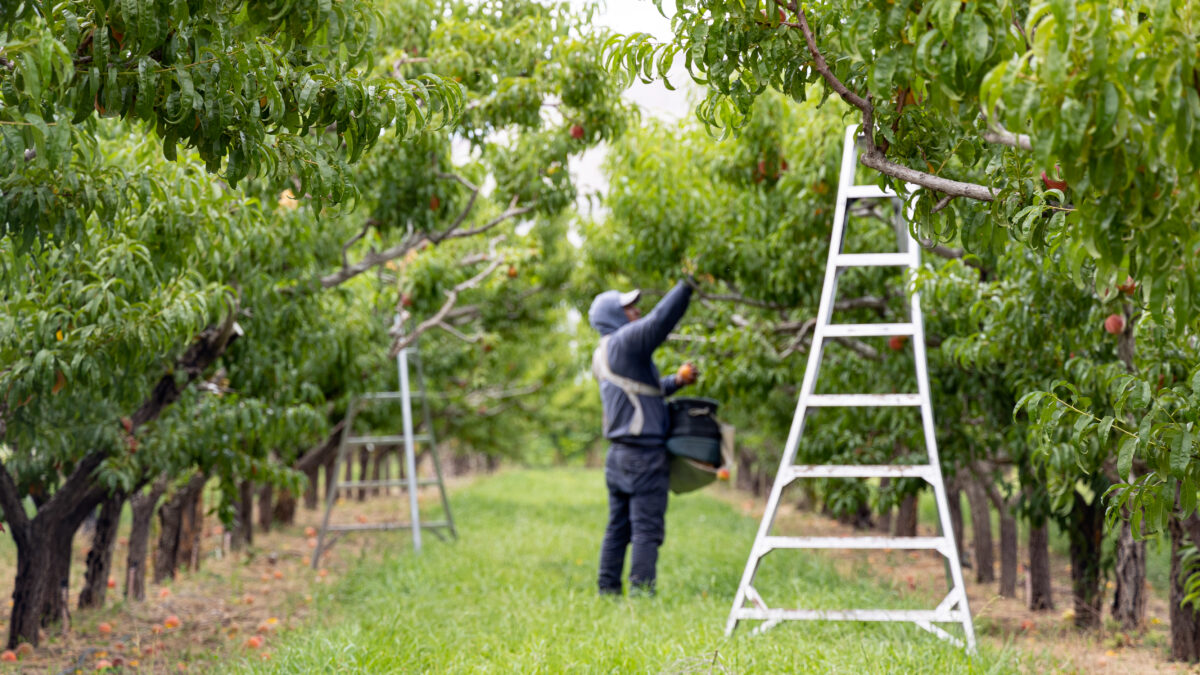On the Farm, Labor = Work
Guest Author
Special Contributor to FB.org

photo credit: Colorado Farm Bureau, Used with Permission
Guest Author
Special Contributor to FB.org
People are needed to keep a farm running. From repair tasks to driving machinery and checking crops--there's no shortage of work to be done. Seems simple right? But farm work is real labor. It's not easy. The job doesn't include an ergonomic chair, cubicle, scheduled vacation or sick days. Farm work requires long days in often undesirable weather conditions and comes with an unpredictable schedule. It requires ongoing training, knowledge of crops and how they grow, plus many hours of twisting, turning, bending, climbing, shoveling and heavy lifting. There's no way around it: It is labor and most Americans do not want to do it.
Our farm has run into a worker shortage for the past 13 years. We advertise in local papers and spread the word through our neighbors. We have offered bonuses and additional benefits, but get minimal response. We have been unable to hire any of the people who respond, and we are left each year looking to hire qualified foreign seasonal labor through the H2A, ag worker visa program, and the H2B visa program.
When I reflect on the process, all I can say is that it is cumbersome, untimely, expensive, uncertain, and ultimately lacks an understanding of agriculture and our labor needs. Over the years, the amount of personal, business and farm production information we have to present to prove our need for labor increases. But the speed of getting visas cleared does not. The time frame for approval and having an employee arrive and ready to work has become unmanageable and costly. We start the application process months in advance, adhere to dates and guidelines requested and then wait for someone at the Department of Labor--with little to no knowledge of farming in my region--to approve, deny or delay a request. We have had employees arrive anywhere from three days to one month after the date we needed them. This simply doesn't work. We cannot run a business without people to help get the work done. When our employees arrive significantly late, our time frame for training to ensure safety procedures are followed is condensed, and our ability to get a crop planted and cared for is hindered.
The H2A worker program has faults. For example, the workers are only able to work for nine months. This presents a problem for us since we farm year-round: preparing soil, planting, caring for the crops, harvesting, and hauling our crop to point of sale. Another issue with the program is that we are not guaranteed to be approved for hiring year after year, and even if we are approved, we do not know if we will be able to hire the same employees back. This causes a lot of stress and uncertainty. We can't afford to not know who will be on our workforce. Initial training, orientation and licensing take a lot of time. Time we can't afford to take away from running our business. A revised ag worker visa program is desperately needed and needs to include options for year-round employment, renewability of employment, and should account for reasonable wages, manageable expenses and additional benefits like housing, transportation and meals. Foreign labor is not just a need for select states or specific sectors of farming: it is a need for all. I begin my farm's journey into 2016, hopeful that change will be made and that we will be able to hire a dependable, willing workforce.
Katie Heger, dedicated advocate for agriculture, blogs at hegerfamilyfarms.wordpress.com and shares at Heger Farms on Facebook. Katie and her husband farm corn, soybeans and wheat in central North Dakota.
Trending Topics
VIEW ALL